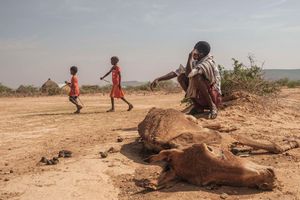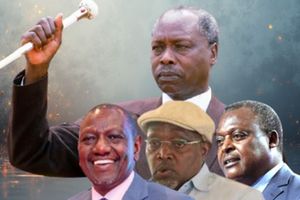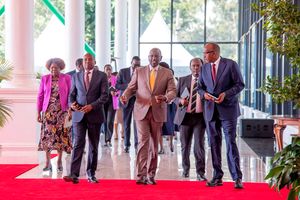
Extreme weather events such as destructive heat waves, floods, and relentless wildfires, are daily headlines.
As we reach the midpoint of the Road to COP30 in Belem, Brazil - the climate agenda faces unprecedented challenges worldwide, with mounting attacks on climate action amid worsening climatic impacts.
Extreme weather events such as destructive heat waves, floods, and relentless wildfires, are daily headlines, occurring with greater frequency and severity than ever before. This in itself demonstrates the reality of the climate crisis.
This year is also critical, as countries are expected to submit updated Nationally Determined Contributions (NDCs) outlining their commitments to a low-carbon future under the Paris Agreement. Yet, only a handful have done so, and many submitted targets fall far short of what science demands to limit warming to 1.5°C. The shocking gap between escalating climate risks and insufficient political response highlights a dangerous disconnect at a time when global leadership is most needed.
Across the globe however, communities on the frontlines of climate change are not waiting for permission to act. They are organizing, restoring, innovating, and protecting the ecosystems they call home.
A significant step has been taken this week in Kenya to acknowledge the pivotal role of grassroots leaders. The government has initiated public participation forums on the Draft National Government Village Administration Policy and the Draft National Government Coordination (Administrative Units) Regulations, 2025. This move aims to officially recognize village elders as part of the National Government Administrative Officers (NGAOs).
Interior Principal Secretary Raymond Omollo emphasised that the inclusion of village elders will help bring government services closer to the people. He stated that public input is central to shaping frameworks to improve grassroots governance, service delivery, and national cohesion, noting that governance is a shared responsibility grounded in public involvement and constitutional values.
Empowering local leadership
These reforms represent an important and necessary step toward redefining how the government reaches, serves, and partners with citizens at the grassroots level. Often the first responders in matters of dispute resolution, public verification, and community coordination - village elders have operated without legal backing or compensation.
As we confront the escalating challenges of climate change, empowering local leadership becomes not just beneficial but essential. Their intimate knowledge of the land, their cultural roots, and the trust they have built in the community make them uniquely positioned to implement lasting, context-specific solutions.
By formalising and resourcing their roles, we create the foundation for more resilient and responsive climate strategies.
My belief in grassroots leadership has been shaped by the Green Belt Movement (GBM), founded by my mother, Wangari Maathai, in 1977. Through GBM, she tapped into the leadership of rural women who were experiencing the direct consequences of environmental degradation. These women didn’t need convincing to plant trees. They could see how planting trees would restore degraded land, bring back water sources, and improve their livelihoods.
Similarly, Community Forest Associations (CFAs) — established under the Forest Act of 2005 — have given communities living near forested areas a role in co-managing national forests and conserving biodiversity. I’ve seen firsthand how the best of these groups, often made up of volunteers, bring passion, vigilance, and deep environmental stewardship to their work.
Realities and hopes of all Kenyans
While their mandates remain limited and underfunded, they can represent a model of what happens when you empower those whose lives, livelihoods, cultures and identities are connected to natural resources — they protect them.
And yet, we must ask: how empowered will these grassroots leaders truly be? This policy must go beyond symbolism. Village elders and local leaders must be trained, resourced, and meaningfully included in conversations about climate resilience, land use, and natural resource governance.
In many parts of Kenya, women and youth are still not viewed as traditional community leaders, despite being the very fabric of those communities. If this policy is to succeed, it must enshrine gender equity and youth representation. Will it, for instance, include a two-thirds gender rule? Will it ensure that young people have a seat at the decision-making table? These are not peripheral questions.
I In fact they are central to building a leadership model that reflects the realities and hopes of all Kenyans.
As we reflect this Easter season — a time of renewal and reflection — let us recommit to honoring the frontline leaders who walk among us every day. The elders, the women, the youth. The ones who plant trees, protect rivers, solve disputes, and hold communities together.
If we are to overcome the climate crisis and build a just future, it will begin—not in boardrooms—but at the grassroots. Happy Easter.
Wanjira Mathai is the MD for Africa & Global Partnerships at the World Resources Institute and Chair of the Wangari Maathai Foundation.










